How to capture Google Ads data in Chili Piper
Learn how to capture Google Ads data in Chili Piper so you know what campaigns are driving your leads/bookings
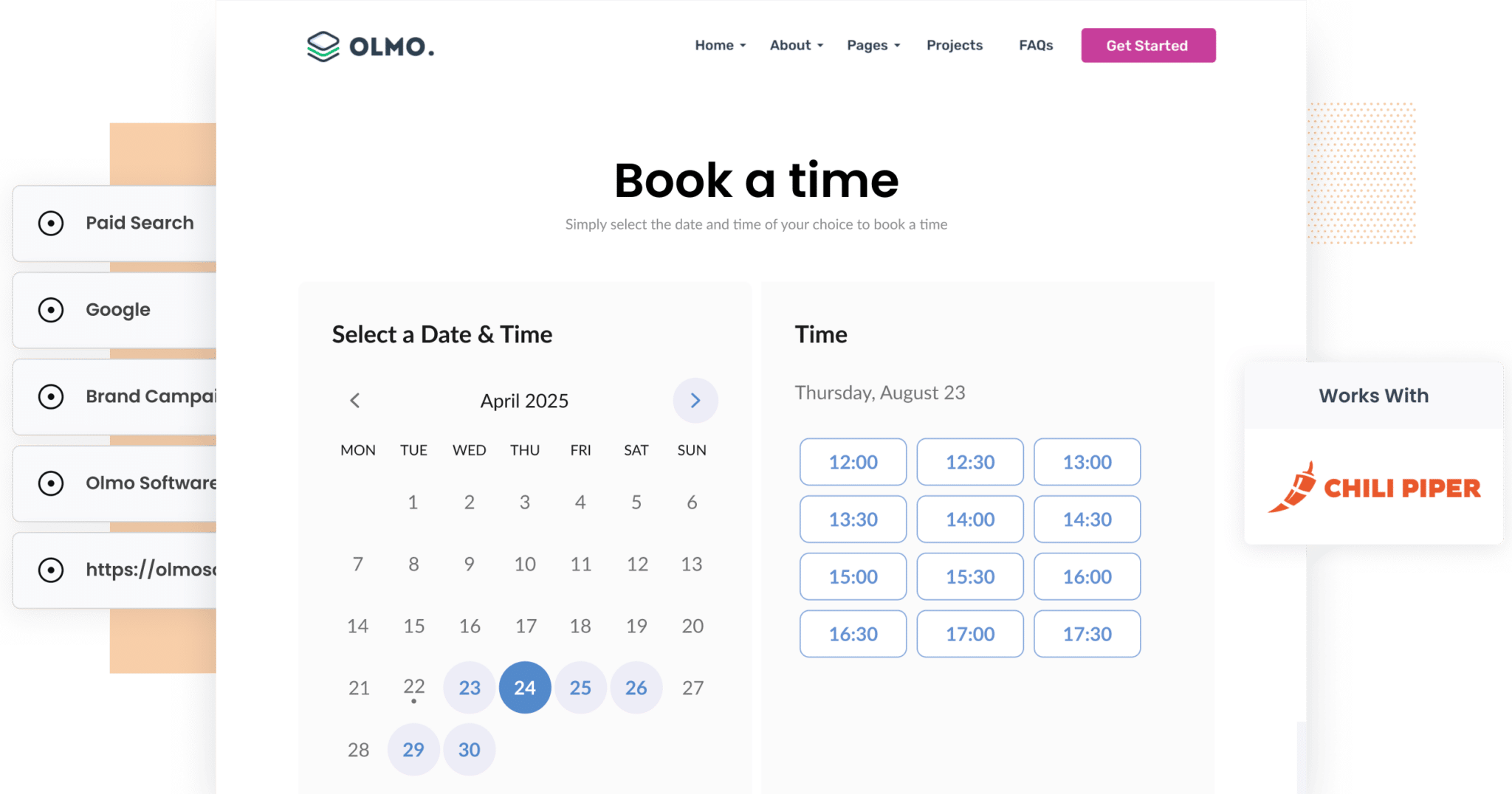
You're investing in Google Ads, clicks are coming through, and your website traffic is ticking up. But when it comes to knowing exactly how many leads and customers you're getting from those ads…you're in the dark.
Google Analytics can show you visitor numbers, but it can't tell you which campaigns generate meetings that turn into customers and revenue.
That’s where many marketers hit a wall.
But there’s good news: there’s a smarter way to connect the dots.
In this article, we’ll show you how to use Attributer to capture Google Ads data with each meeting booked in Chili Piper and send it to your CRM, so you can track which campaigns, ad groups, keywords, etc are generating customers and revenue for your business.
4 simple steps to capture Google Ads data in Chili Piper
Capturing Google Ads data in Chili Piper is simple when you use Attributer. All you’ll need to do is follow these four steps:
1. Add UTM parameters to your ads
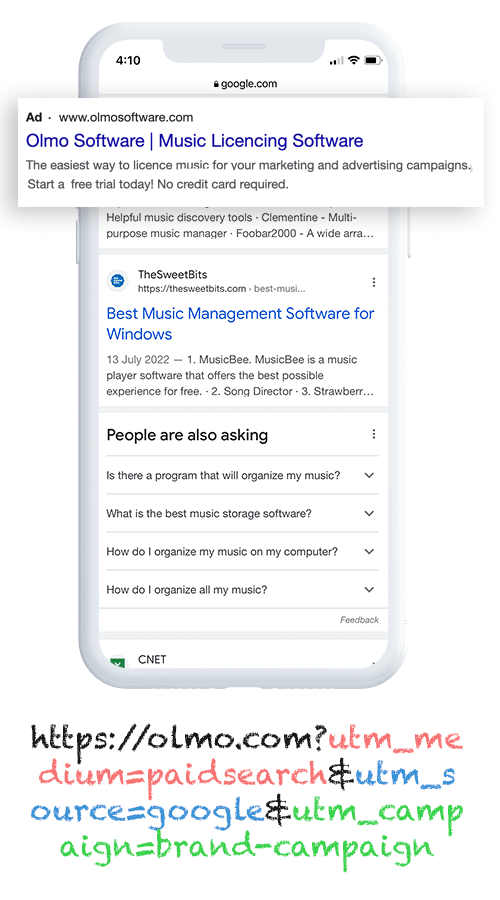
Start by adding UTM parameters to your ads.
If you haven’t heard of them before, they are small snippets of text that you add to the end of the URLs you’re sending people to from your ads.
So if you were originally sending someone to attributer.io/integrations/chilipiper then the URL with UTM parameters would look like this:
https://attributer.io/integrations/chilipiper?utm_medium=paidsearch&utm_source=google&utm_campaign=brand-campaign
What information you put in your UTM parameters is up to you, but this is the format we recommend for Google Ads:
- UTM Medium = Paid search
- UTM Source = Google
- UTM Campaign = The name of your Google Ads campaign
- UTM Term = The name of the ad group the ad belongs to
- UTM Content = The specific ad
2. Install Attributer on your site
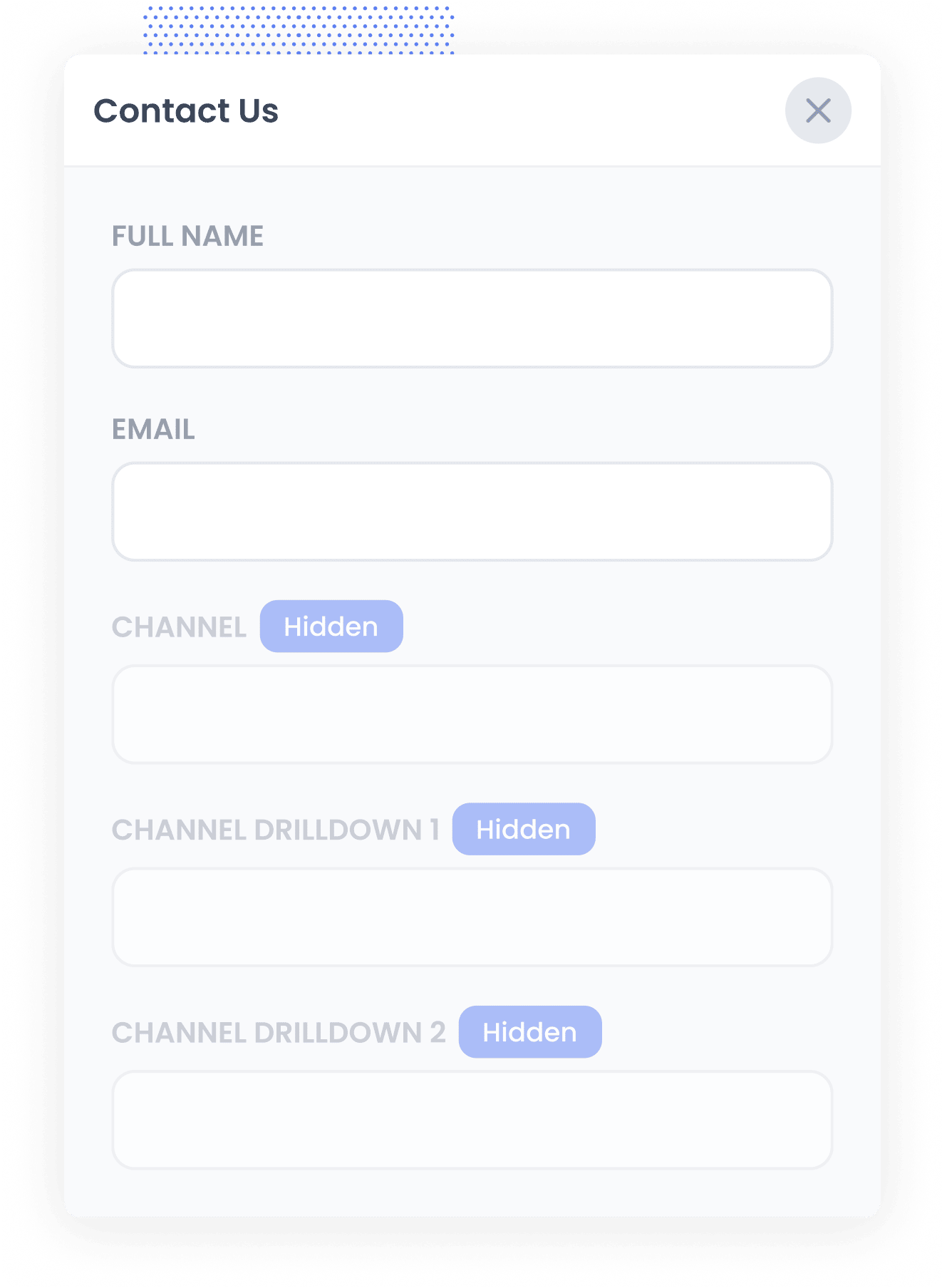
Once you’ve signed up for your 14-day free trial of Attributer, you’ll receive a small snippet of code to place on your website. It only takes a few minutes to install, and you’ll find step-by-step instructions for most popular website platforms here.
3. Attributer passes through Google Ads data with each booking
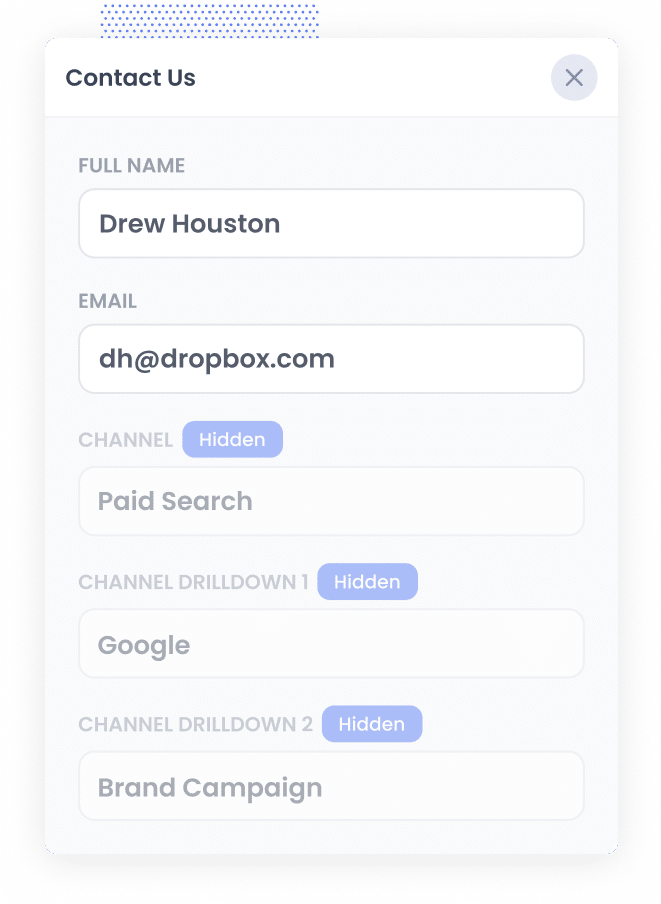
Now that everything is in place, Attributer will begin tracking where your website visitors are coming from. Then, when someone books a meeting through your embedded Chili Piper form, Attributer automatically includes their source information with the booking.
Let’s say you’re the marketing manager at a company that makes construction management software. You’ve just launched a Google Ads campaign targeting construction companies and someone clicks your ad and books a demo. Here's what data Attributer would pass through (depending on what UTM parameters you put behind your ads):
- Channel = Paid Search
- Channel Drilldown 1 = Google
- Channel Drilldown 2 = Scheduling Campaign
- Channel Drilldown 3 = Construction Industry Ad
4. Google Ads data is captured by Chili Piper and can be sent to your CRM and other tools
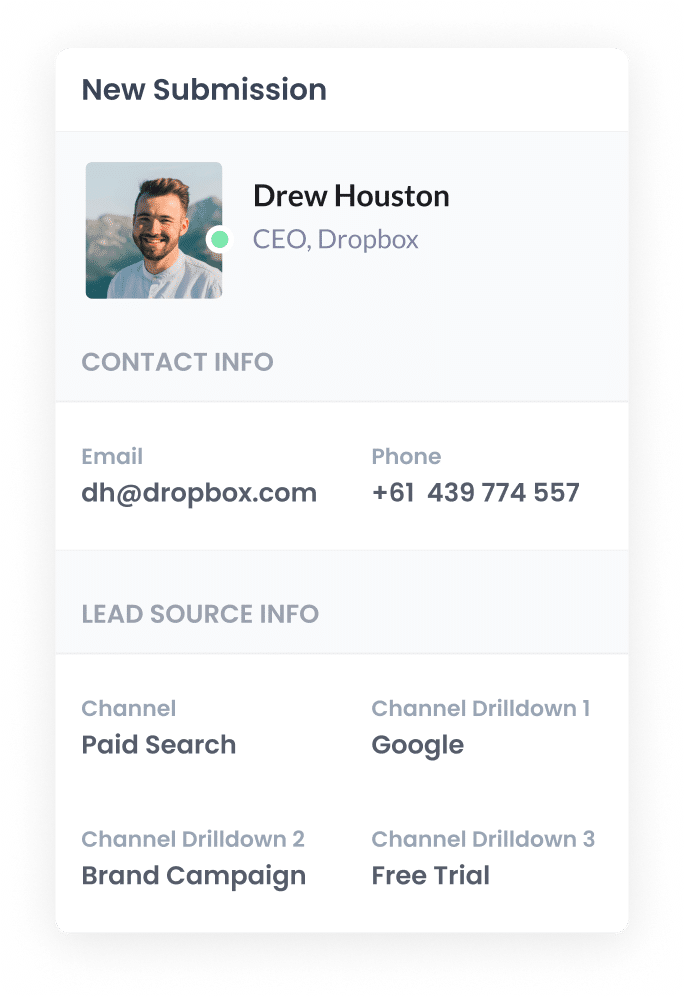
Finally, once the data is captured in Chili Piper alongside each meeting booking, you can use it however you like.
This might include:
- Viewing the attribution details on the event page in your Chili Piper account
- Sending the data to your CRM (like Salesforce, Pipedrive, Hubspot,, etc.) and using built-in reporting tools to create charts and dashboards that reveal how many leads and customers your Google Ads are generating.
- Exporting it to a spreadsheet for a clear, filterable table view, or connecting it to tools like Google Data Studio for more advanced reporting.
Why using Attributer is the best way to capture Google Ads data in Chili Piper
Here’s why Attributer is your best bet for capturing Google Ads data in Chili Piper:
1. Captures all traffic
Attributer doesn’t just track leads or bookings from Google Ads, it captures the source of every lead.
Whether someone discovers your business through a Facebook Ad, an organic Google search, or even a referral link, Attributer logs how they found you and passes that information through with their booking.
This means you get a complete view of where all your leads and customers are coming from, helping you make smarter, data-driven decisions about where to invest your marketing time and budget.
2. Remembers the data as visitors browse your site
Chili Piper’s native UTM tracking has a key limitation, it only captures UTM parameters if they’re still present in the URL when the booking is submitted.
This becomes a problem when a visitor clicks your ad, lands on your homepage, and then navigates to your 'Book a Call' page to schedule a meeting. Since the UTM parameters usually drop off during navigation, no source data is captured when the form is completed.
Attributer handles this differently. It stores the UTM parameters in the user’s browser, allowing the data to persist as they move through your site, or even if they leave and return later. When the lead eventually books a time through your Chili Piper form, the original attribution data is passed through.
3. Captures landing page data as well
In addition to capturing Google Ads data (from the UTM parameters you apply to your campaigns), Attributer also records the user’s original landing page and the category that page belongs to.
Referring back to the construction software company example, if someone landed on a page like coresoft.com/features/scheduling, Attributer would store that specific URL as the landing page, as well as the landing page group (i.e. /features).
This enables you to understand which pages and sections of your website, whether it’s blog posts, feature pages, or landing pages, are driving the most leads and customers.
3 example reports you can run when you capture Google Ads data in Chili Piper
If you capture Google Ads data with each submission of your Chili Piper booking widget, and you send it to your CRM or other tools, then you're able to run reports like these:
1. Leads by Channel

This report displays how many leads you generate each month, segmented by the marketing channel they originated from.
It’s a valuable way to assess which channels are performing best and which may not be delivering a strong return.
For example, if the majority of your leads are coming from Organic Search but you're allocating most of your budget to Paid Search, the data might suggest it's time to rebalance your marketing spend.
2. Customers by Google Ads campaign
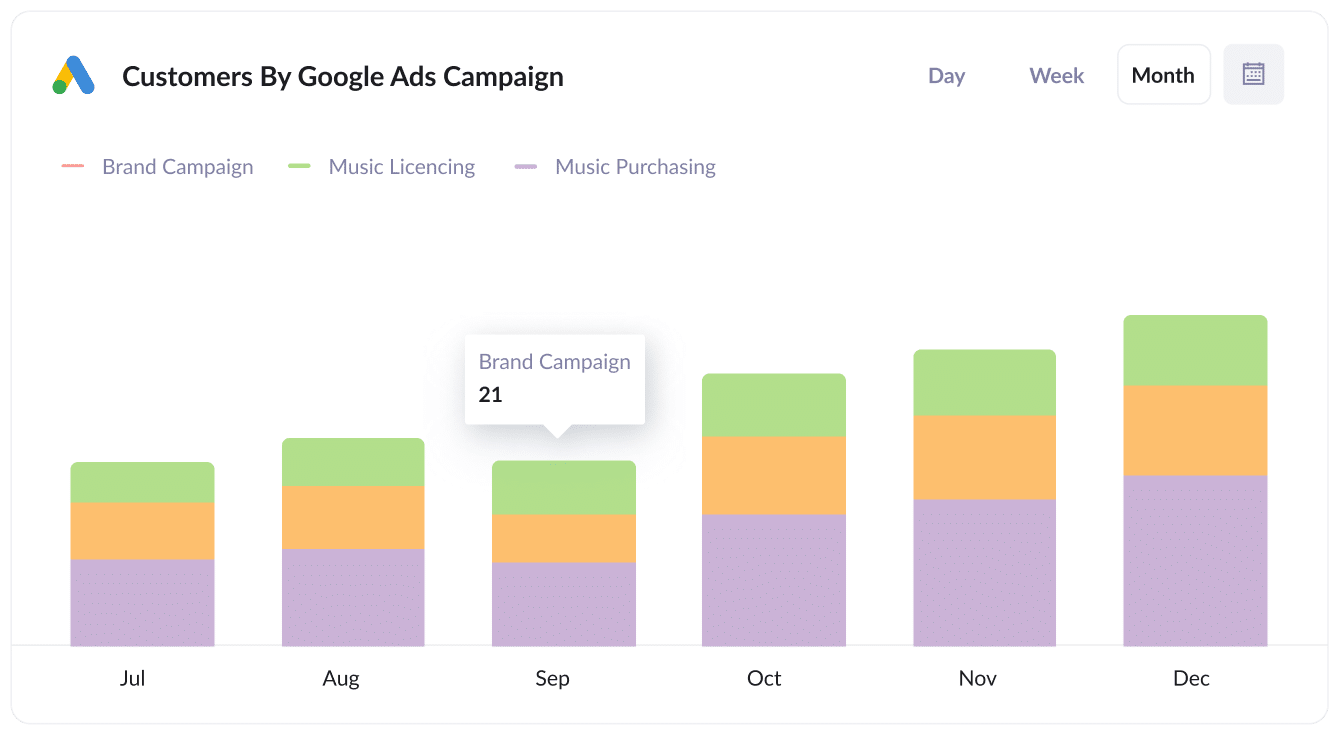
This chart highlights the number of new customers acquired each month, grouped by the specific Google Ads campaign that brought them in.
It offers clear insight into which campaigns are driving real results. Not just clicks or leads, but paying customers.
With this data, you can confidently double down on the high-performing campaigns and scale back the ones that aren’t performing.
3. Revenue by Keyword
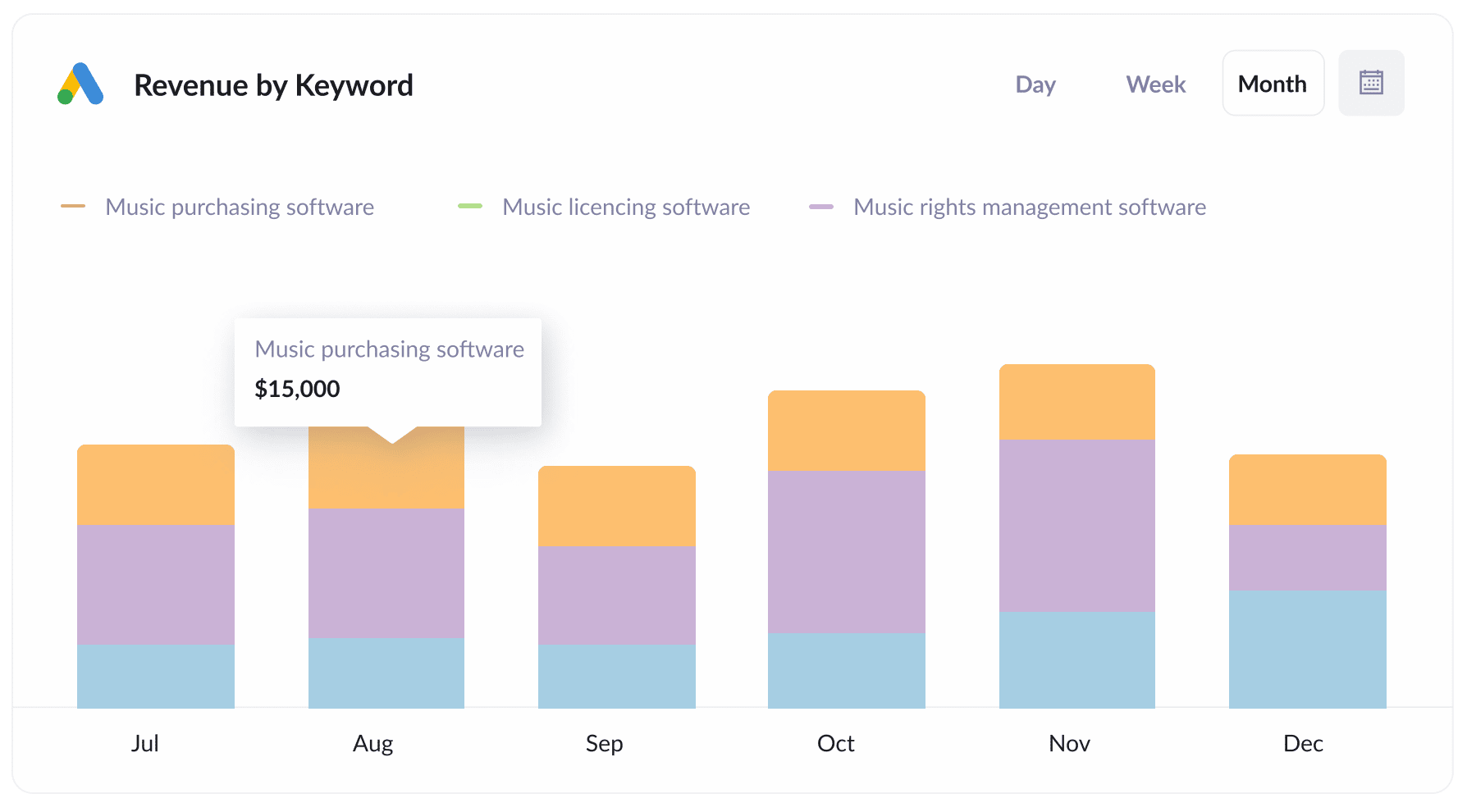
This report reveals the total revenue generated from new customers, segmented by the specific keyword that triggered their ad click.
It gives you a clear view of which keywords are not just driving traffic, but actually contributing to your bottom line.
With this insight, you can invest more in the high-performing keywords that bring in valuable customers and reduce spend on those that aren’t delivering results.
Wrap up
If you’ve been searching for a reliable way to track how many meeting bookings your Google Ads are actually generating, Attributer might be just what you need.
It remembers the UTM parameters you’ve added to your ads and carries them through when someone completes a Chili Piper booking on your site, even if they navigate away and return later.
Better yet, Attributer doesn’t just track Google Ads. It also captures attribution data from all your other channels, including Facebook Ads, organic search, referrals, and more, giving you a full picture of where your leads and customers are coming from.
Getting started is quick and easy. Attributer offers a free 14-day trial, and setup typically takes under 10 minutes. Try it today!
Get Started For Free
Start your 14-day free trial of Attributer today!

About the Author
Aaron Beashel is the founder of Attributer and has over 15 years of experience in marketing & analytics. He is a recognized expert in the subject and has written articles for leading websites such as Hubspot, Zapier, Search Engine Journal, Buffer, Unbounce & more. Learn more about Aaron here.
